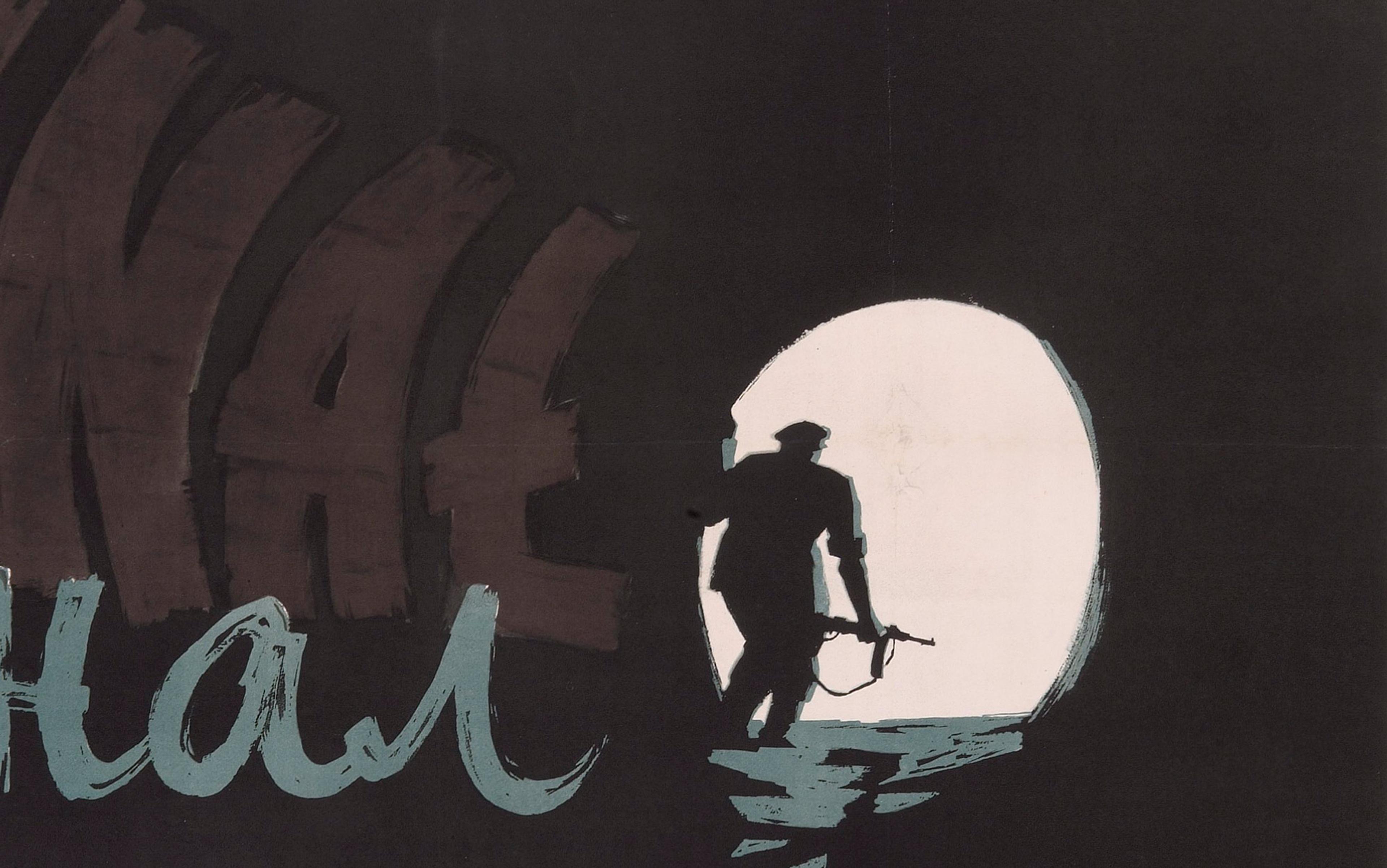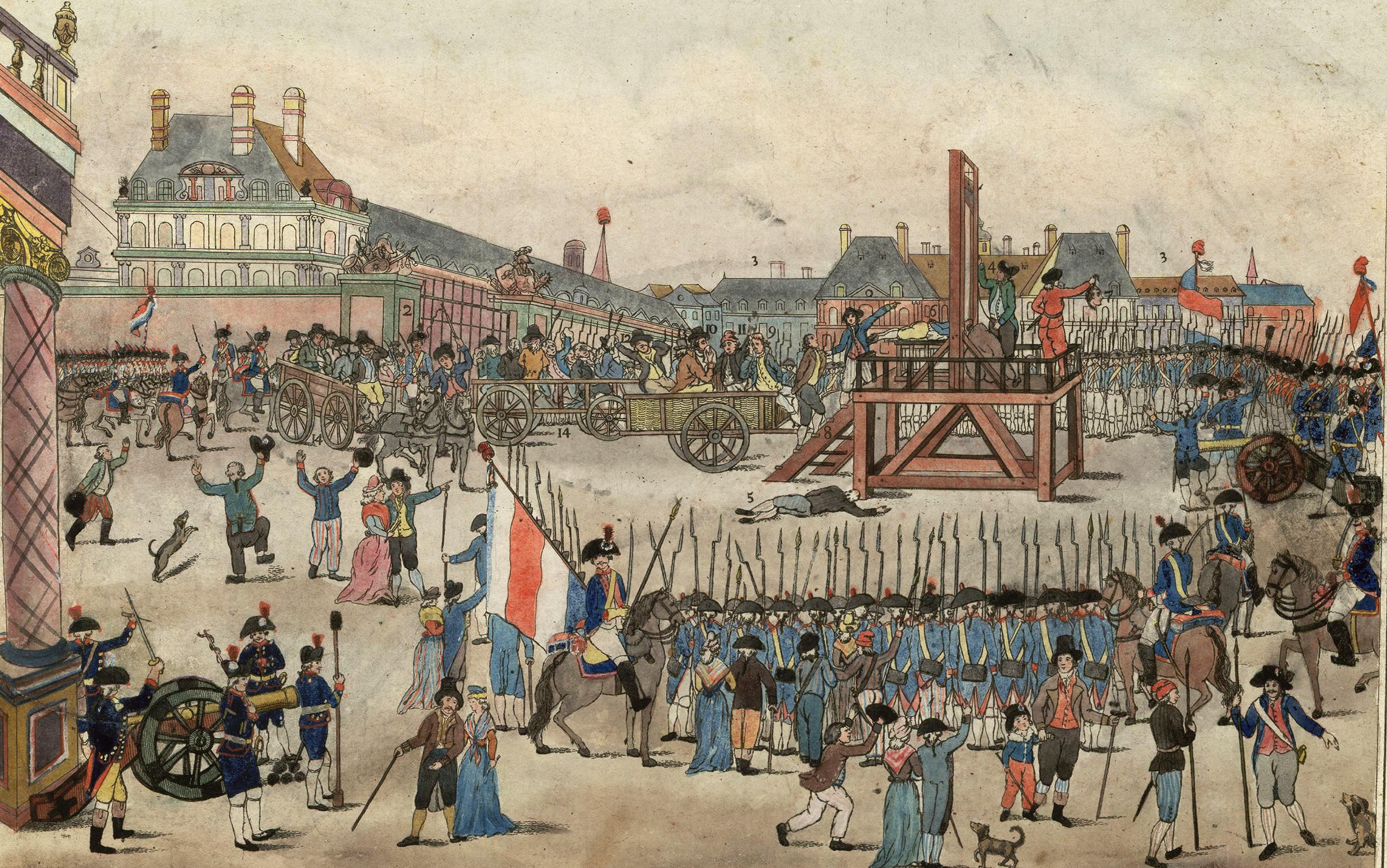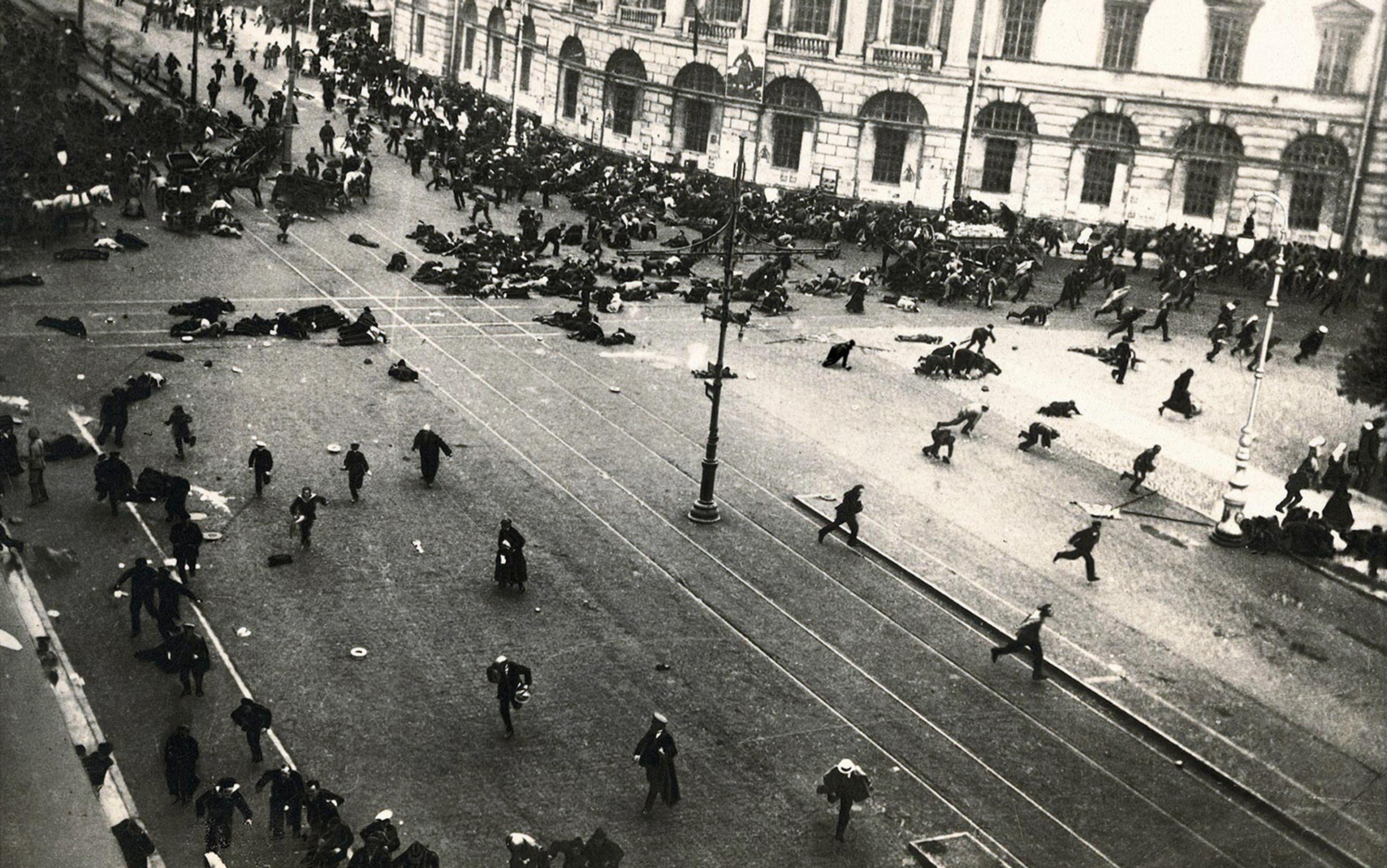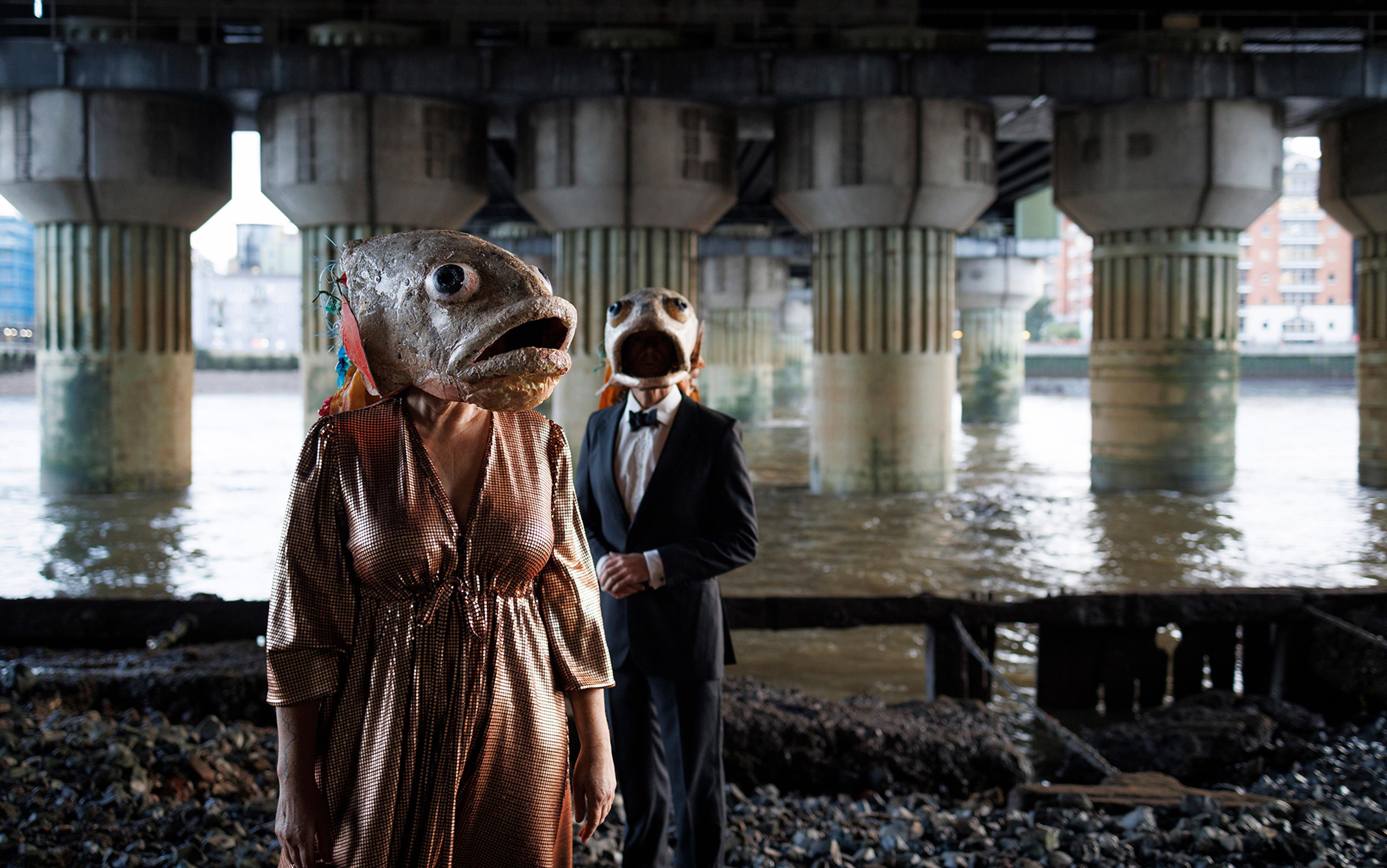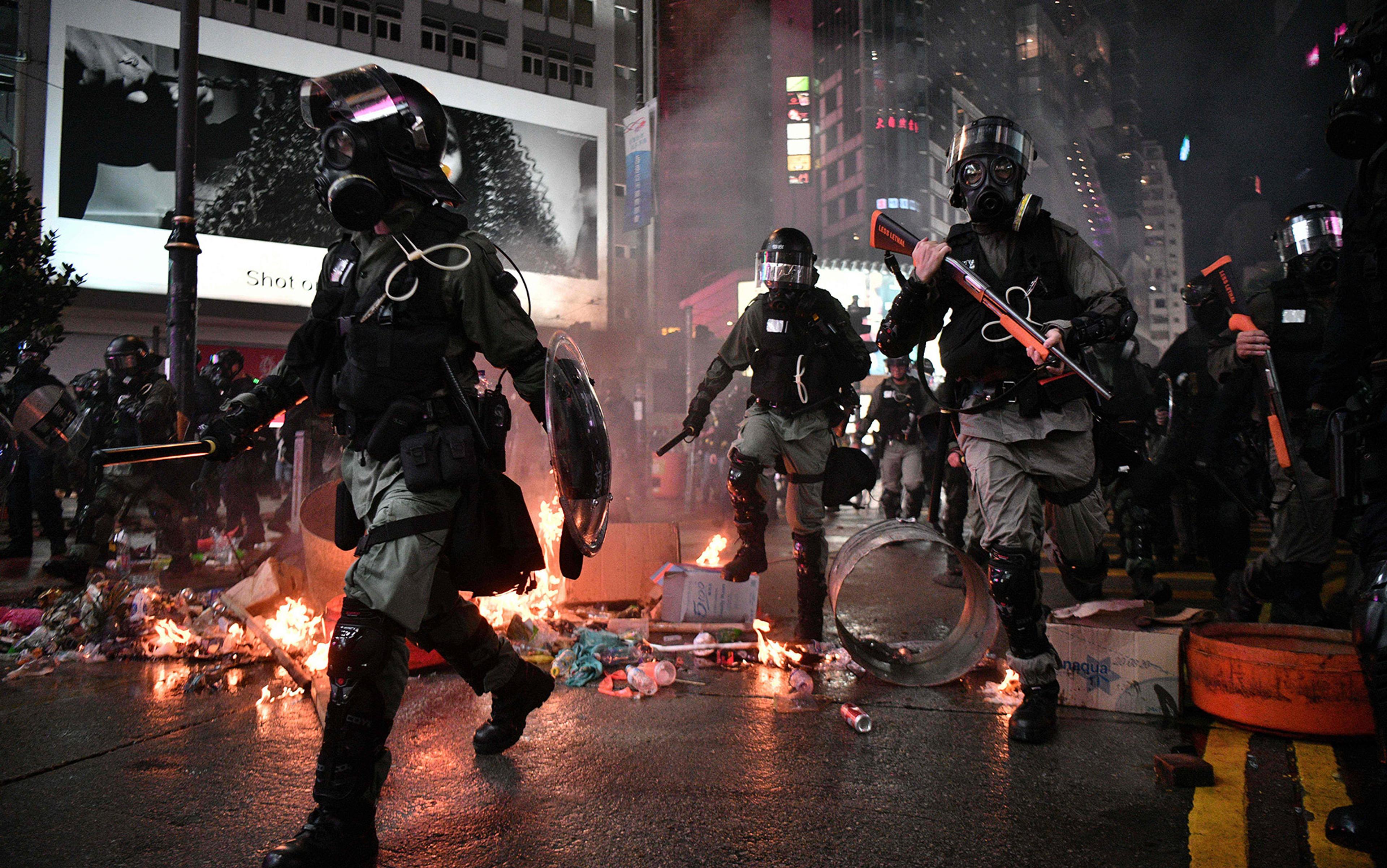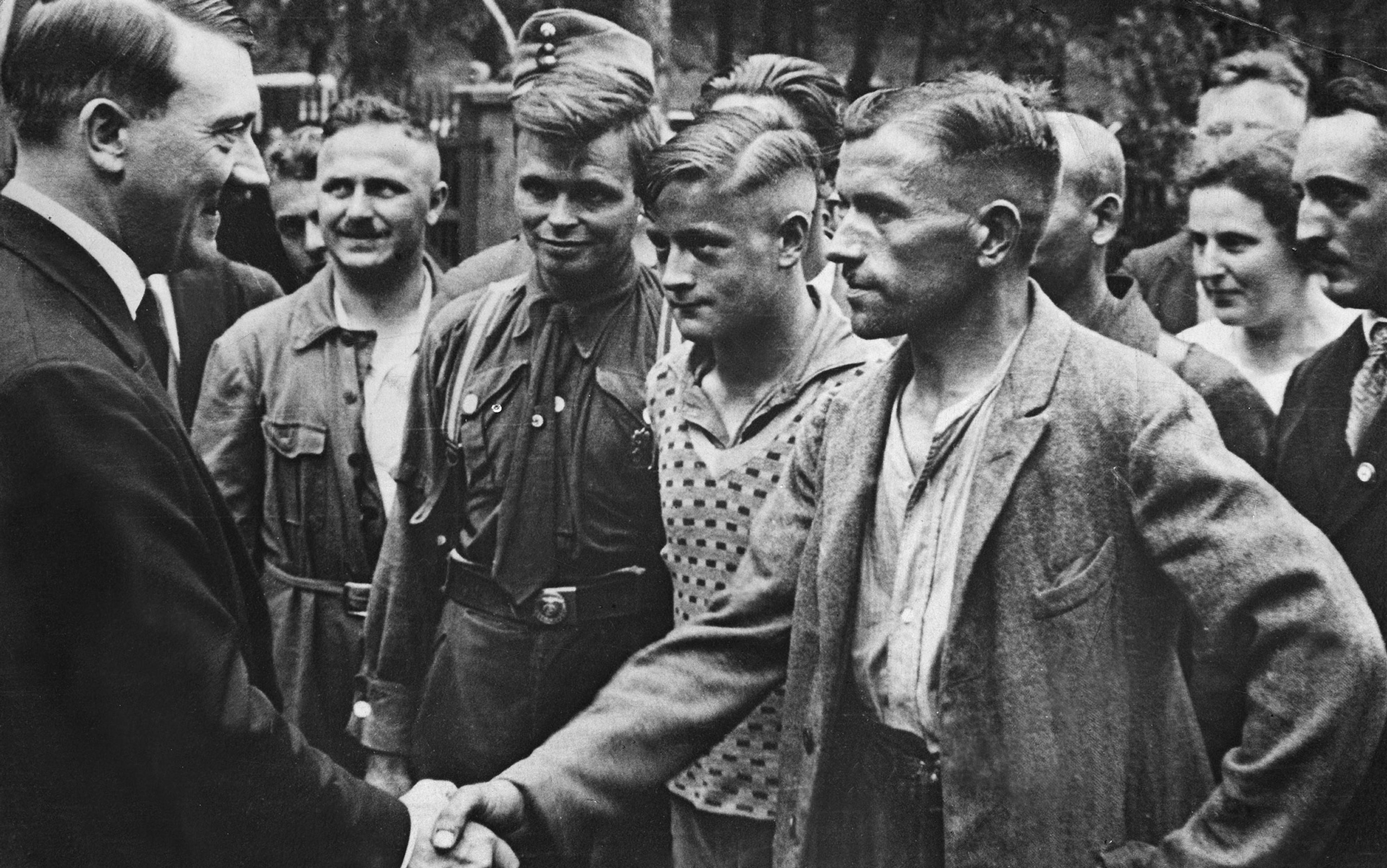A puncture can change your life. In Louis Malle’s film Lacombe, Lucien (1974), the young peasant Lucien is rejected by his former schoolteacher who runs the local resistance organisation he wishes to join and then, returning home by bicycle, gets a flat tire. Seeking help in a nearby farmhouse, he finds himself among a band of carousing militiamen, collaborators sworn to eradicate La Résistance. He denounces the teacher, becomes a local boss of the militia, and is finally shot by resistance fighters.
This much-quoted moment of chance is the starting point for the book Aurais-je été resistant ou bourreau? (2013) by literature professor and psychoanalyst Pierre Bayard, which translates as ‘Would I have been a resister or a collaborator?’ As historians, and indeed as citizens, we assume that we would have made the right decision during the Second World War, given what we know about its horrors. The myth developed by General Charles de Gaulle in 1944 – that the French overwhelmingly behaved patriotically, rallied behind his leadership, and liberated the country themselves – persuades us that we would most likely have resisted Nazi Germany. A myth, however, is designed to unify a people and legitimate its rulers, not to tell the truth. As a young lecturer at Oxford 35 years ago, I remember looking round my college’s governing body, composed overwhelmingly of conservative middle-aged men, and wondering what they would have done if Britain had been occupied by the Germans. I concluded that most of them would have collaborated.
Today, after the shocks of Brexit and the Trump election, and with Marine Le Pen still lurking in the wings, I now begin to understand how the French must have felt in 1940. They underwent a double collective trauma. First, their country, which had emerged triumphant in 1918 after four years in the trenches, succumbed in six weeks to a German Blitzkrieg. The government fell, to be replaced by another led by Marshal Philippe Pétain, the hero of Verdun in 1916, which immediately sued for an armistice. The northern half of the country was occupied by German forces, 1.5 million Frenchmen were taken to POW camps in Germany, the army was reduced to a peace-keeping Armistice Army of 100,000 – what the Allies had allowed Germany after 1918 – and a huge reparations bill was imposed. Second, dazed and demoralised politicians reconvened in the spa town of Vichy in the so-called Free Zone and handed full powers to Pétain to make a new, stronger constitution. Parliament was dismissed, the Republic that had stood since 1870 was abolished, and executive, legislative and judicial powers were vested in Pétain as head of state. A National Revolution was launched to regenerate France in preparation for the time it might recover its independence. Freemasons, communists and Jews, alleged to have dominated the Third Republic and stabbed France in the back, were pilloried as the ‘anti-France’, purged and persecuted. The ‘decadence’ said to have sapped France’s strength was dealt with by sending young people to the so-called ‘Chantiers de la jeunesse française’ (CJF), or glorified boy-scout camps. Married women were removed from public-sector jobs and sent back to the kitchen and bedroom; the author Benoîte Groult, then a 20-year-old writing in her diary, remarked: ‘of the sexes, we are the Jews’.
In such a situation of shock and bewilderment, it was not obvious what the French should do. Overwhelmingly, they were patriotic, but where did patriotism lie? Most took the view that France had been undermined and betrayed by forces that were not properly French. These should be excluded to restore France’s health and vigour, and the nation’s fortunes should be entrusted to a real military hero, Marshal Pétain. The Marshal met Hitler in October 1940 and shook hands with him, announcing that he was embarking on a strategy of collaboration. This was not necessarily all bad. Its purpose was to bring POWs home sooner, to make it easier to cross the demarcation line between the occupied and non-occupied zones and to reduce some of the financial and economic burdens inflicted by Germany, although in practice the Germans made few concessions. Many people thought that Pétain, while working ostensibly with the Germans, was playing a double game – in secret contact with the British in order to eventually bring France back into the war against Germany.
Only a minority, initially, took a different view of where patriotism lay. They opposed the armistice and argued that, while the war on French soil had been lost, France should have gone on fighting from its colonies in North Africa. On 18 June 1940, de Gaulle, a far more junior general to Pétain, broadcast on the BBC to invite soldiers, sailors, airmen and technicians wherever they were to come to London and join the Free French to continue the fight. Only a few thousand, who had escaped from France after the defeat, heeded his call. They were denounced by the Vichy regime as traitors who had gone over to an enemy that was hated even more than Germany and which, on 3 July 1940, sank the French fleet where it lay at anchor in Oran, lest it fall into German hands, with the loss of 1,300 lives. De Gaulle himself was sentenced to death by a military court. A minority within France also opposed the Vichy regime – the dictatorship it erected, the heavy censorship it imposed and the policy of exclusion and persecution, which included the purge of French Jews from public- and private-sector jobs and the internment of foreign Jews. It was possible for many to oppose the German occupation and policy of collaboration and yet to support the Vichy regime as the best guardian of France’s interests. Captain Henri Frenay, a professional soldier from a military family, whose father had died in the First World War, admired Marshal Pétain and worked for Vichy’s military intelligence until 1941. Only at that point did the scales fall from his eyes, and he left the army and set up a resistance organisation, Combat.
It has been calculated that, among the French, only about 2 per cent became involved in resistance activity, and 1 per cent actively collaborated with the Germans, while all the others kept their heads down and waited for liberation to arrive. These small minorities were diametrically opposed to each other, and by 1944 were engaged in civil war, as Lacombe, Lucien illustrates. However, they also had things in common. They were ideologically committed to brave new worlds. For resisters this meant that liberty, equality and fraternity would genuinely inspire a new Republic, the mirror image of Vichy but also different from the Third Republic, which had become weak, corrupt and divided. For collaborators, this meant joining the New European Order under the auspices of Germany, which would eliminate the evils of international communism, international Judaism and Anglo-Saxon democracy. Many resisters were also opposed to communism, and a fault-line divided resistance movements between those who espoused communism as the only force capable of destroying Nazism, and those who feared precisely that it would take over Europe. Some resisters were also anti-Semitic, and differed from Vichy only on the point of not accepting the armistice. One further thing resisters and collaborators had in common was that they were men and women of action who risked liberty and life in the name of what they believed. Joseph Darnand, the brute who had donned a Waffen SS uniform and headed the militia that waged war on the resistance alongside the Germans, was put on trial for his life in 1945. ‘I am not afraid to be accountable to people who were in the resistance, to those who really fought,’ he declared. ‘I am much more frightened of those who did nothing and now pretend that they are resisters.’
Most French people ‘did nothing’ because that was the safest course of action. In 1997, I interviewed a winegrower in his wine cellar near Saumur, on the Loire. ‘Pétain saved my life,’ he began, eager to tell me that for him the armistice of 1940 meant that he was not going to be killed in battle. He returned to his village and made a good deal of money during the German occupation, as town-dwellers short of food came on train and bicycle to the countryside to buy directly from farmers, who charged them what they wanted. He was not untypical. The armistice meant that – apart from the 1.5 million POWs – people could return to their homes, their family and friends, their education, their jobs. They could return to routine and conventional ways of thinking, and wait for the war to end. The understanding was that, as long as they did not take up arms again, the Germans would leave them alone. If they did, no mercy would be shown. When a communist resister shot dead the German military governor of Nantes in 1941, Hitler himself ordered the execution of 50 French hostages immediately, and 50 more in 48 hours if the murderer was not found. The mayor, prefect and bishop of Nantes so persuaded the German authorities of the loyalty of the local population that the second batch of hostages was not shot.
Resistance, by contrast, meant to ‘do something’, and much thought went in to what this might be. For a long time, it did not involve violence: the first to embark on this were communists who saw themselves opening up a ‘second front’ behind enemy lines after Germany invaded the Soviet Union in June 1941. De Gaulle issued clear instructions that those resisting in his name should wait until he gave the order to fire. Resistance activity could take many forms. It involved sporadic, spontaneous and symbolic gestures, such as painting ‘V’ signs on public buildings or demonstrating on Bastille Day or Armistice Day, to show that the patrie was still alive and kicking. This might be seen as peaceful protest but, if those gestures violated orders laid down by the Germans, they would be punished. Students who marched along the Champs-Élysées on Armistice Day 1940 soon found out that the Germans thought otherwise about their defeat in 1918: they arrested a number of students and threatened them with execution. Even listening to the BBC was punished. Other forms of resistance required greater organisation. They included the organisation of escape lines for POWs or downed Allied pilots, sending intelligence about German forces to the Allies by radio-transmitter, and publishing and distributing flyers and newspapers to counter both Vichy and German propaganda with the ideals and aims of the resistance. These actions were also fraught with danger. The Musée de l’Homme group, which was involved in escape lines, intelligence and propaganda, was infiltrated by a traitor and rounded up early in 1941; seven of its leaders were shot in February 1942.
Resistance did not always mean taking the fight to Vichy and the Germans but frustrating their plans. It involved the rescue of individuals and groups threatened by persecution, most especially Jews. Charitable organisations set up to attend to foreign Jews interned in camps in 1940 turned into escape lines for Jews, especially Jewish children, hiding them with families or in convents. This became more urgent when the French and German authorities began to round up Jews – first foreign, then French – in the summer of 1942, deporting them to the extermination camps. Networks of Jews and Christians, sometimes working together, spirited them away when they could across the border to Spain or Switzerland.
‘I didn’t want to leave my children with the memory of a father with his feet snugly in slippers, waiting till it blew over’
What characterised the sorts of people who resisted? According to one leading resister, interviewed for the film Le Chagrin et la Pitié (1971), they were ‘mavericks’ or ‘misfits’. This was not wholly true, but they needed to be non-conformist enough to feel ill-at-ease in Vichy France, and brave enough to risk a great deal by becoming involved. Some people became involved for ideological reasons. The historian Jean-Pierre Vernant, then a brilliant student and young communist, said that ‘the sight of the débâcle [of 1940] revived an old nationalist reflex, deep humiliation and fury at the idea that those people were at home in our homes. And at the same time a very deep antifascism, a hatred of all that.’
Others were influenced by family histories. The diplomat Jacques Lecompte-Boinet was 36, short-sighted, and a father of four in 1939. He was not called up but sent to direct evacuees at Saint-Lazare station. In the autumn of 1941, he was approached by a beautiful and mysterious woman near the Opéra and asked if he wanted to join Combat. He did so in order to live up to the memory of his father, whom he remembered going off to war in 1914 and not returning. ‘I did not want to leave my children,’ he wrote in his diary, ‘with the memory of a father who had spent that time with his feet snugly in his slippers, waiting till it blew over.’ Contingency also counted. The author Madeleine Riffaud was only 15 in 1940 when she was kicked in the backside by a German soldier. Such was her humiliation and anger that she swore to join the resistance. In July 1944, she shot a German soldier dead on the banks of the Seine, hoping to rouse the Paris population to revolt. She was arrested, sentenced to death, narrowly escaped deportation, and was released during the Paris insurrection of August 1944.
Many of those who were ill-at-ease in Vichy France were precisely those whom the regime was persecuting: communists, Jews and foreigners. Poles, Hungarians, Yugoslavs, Romanians, Italians and even German anti-Nazis, often of Jewish origin, fled persecution in their own countries and fought in the International Brigades in the Spanish Civil War. After the victory of Franco, they fled to France where they were interned along with the Spanish republicans they had fought with. ‘One half of the world regarded them as heroes and saints,’ wrote the Hungarian-Jewish journalist Arthur Koestler, who was interned with them, ‘the other half loathed them as madmen and adventurers.’ Because of their military experience, they were well-placed to lead the French resistance after 1942. Young Jews, often immigrants of Polish or Russian origin, whose families had been arrested and deported, joined these resistance organisations to fight a ‘war within the war’ against extermination. Late in 1943, the Germans arrested a group of resisters led by the Armenian poet Missak Manouchian. They published a poster, the so-called Affiche rouge, hoping to discredit the resistance as an ‘army of crime’ peopled by communists, Jews and foreigners. In fact, communists, Jews and foreigners were overrepresented in the resistance because they were persecuted, and also because they had constructed networks to hide, support and train resisters.
As the war went on, the claim of Vichy to be defending France’s interests wore increasingly thin. There were tipping points at which major changes of circumstances shook routines and provoked greater engagement with resistance. One moment was the German invasion of the Soviet Union in June 1941, which realigned the revolutionary and patriotic goals of communists after the confusion of the Nazi-Soviet pact, and freed them to throw themselves into resistance activity. A second was the round-up of Jews in the summer of 1942, which drove many young Jews into underground resistance networks as a way to survive. A third moment was the landing in North Africa on 8 November 1942 by American and British forces.
The consequent invasion of the Free Zone by the Germans on 11 November shattered the illusion that Vichy was getting anything in return for its collaboration with Germany. The Armistice Army and CJF were disbanded. Many young men decided to make their way through Spain to join French forces in North Africa, from which an Expeditionary Force was drawn to land in Italy in November 1943. A fourth moment was the introduction of the so-called ‘Service du travail obligatoire’ (STO), or forced enlistment and deportation in the spring of 1943: the Germans were hoovering up labour from all over Europe in order to work their war economy, while more and more Germans were sent to the Eastern Front. All young men of military age were liable for STO. Many refused to go and went into hiding, the so-called réfractaires. Between 5 per cent and 25 per cent, depending on the area, joined maquis that were forming in the mountains and forests, ready to come out fighting on D-Day.
We now return to the question raised by Bayard: would one have been a resister or a collaborator? To explore this, he introduces the concept of the ‘potential personality’, defined as ‘that part of our character that emerges and develops only in exceptional circumstances, although we might be able to sense it in some daily life situations’. Bayard looks back to the life of his father, born in 1922, and reconstructs a succession of wartime crises that require him to decide one way or the other between resisting and not resisting.
In 1940, his father was working towards the entrance examination to the École Normale Supérieure, which trained the top teachers; his school had been evacuated to Royan, at the mouth of the Garonne. Should he be a hero, get on a boat, and go to North Africa where the war might continue, or join the nascent Free French around de Gaulle in London? He did what most French people chose to do. Despite his ideological differences with the regime, he stayed put, relieved that the war was over, and continued to prepare for his entrance examination. In 1942, he got into the École Normale Supérieure, and though its director was very pro-Vichy, Bayard’s father did not do anything that would get him expelled, let alone arrested. When the STO was introduced in 1943, he was initially excused on medical grounds, but as D-Day approached he decided to resist and join a maquis in the south of France. He had no luck. Arrested en route by the Germans, he was sent to work in Germany and ended up working at a station in Lübeck, where he stayed until August 1944. Given the spike in resistance casualties between D-Day and the liberation, in fighting or in collective reprisals for resistance activity inflicted by the Germans, he was probably safer in Germany.
So much for Bayard’s father. What about myself? The moment has now come for me to run the ‘potential personality’ test on myself. How far would I have behaved differently from the Oxford dons whom I suspected in the 1980s might have collaborated? As it happens, my great uncle, Denis Saurat, head of the French Institute in London, went to see de Gaulle on 19 June 1940, the day after his famous appeal on the BBC, and provided him with numerous contacts with the British establishment. He appeared with de Gaulle at the Queen’s Hall on 17 July 1940, addressing a crowd of 3,000 on his behalf, since at that point the General was reluctant to speak. Saurat, however, was the same age as de Gaulle (both men were born in 1890), and my great uncle was related to me by marriage, not by blood; I could not legitimately take him as a surrogate for my younger self.
My father had a fantasy that he would arrive in Singapore in a white uniform and liberate his father from Changi Prison
My own father was born in 1923, a year younger than Bayard’s. Since Britain was not occupied by the Germans, he did not have to resist, but did his bit in the armed forces. He was a patriot, but not a foolhardy one. As a boy, he had been brought up on the horror of the trenches and, as an only child, pleased his mother and himself by joining the navy before he was conscripted into the army. Moreover, like Bayard’s father, he did not let his studies suffer. He took the entrance examination for Oxford University in December 1942, applying for what he called ‘the worst college’ to maximise his chances of success, before he joined his ship. Early in 1946, he was demobbed and returned to his studies. He spent his career in the Civil Service negotiating Britain’s entry into Europe, a life’s work now torn apart by Brexit.
Had I myself been in France in 1940, I imagine that I would have acted very much like my father and Bayard’s. I have been involved in moments of activism, but not so as to threaten my studies or to risk arrest. I marched against the Vietnam War, aged 15, in 1968, but was relieved that the size of the crowd made it impossible to enter Grosvenor Square, where the leading activists were clashing with police outside the American Embassy. In 1974, students supporting the formation of a central students’ union occupied university buildings, and 18 of them were subsequently excluded. I am afraid that I did not join them; my final examinations were coming up and I did not want to endanger my academic future. In 1940, I would most probably have continued with my studies, but certainly chafed under the Vichy regime and German occupation.
Of all the resisters I have written about, I probably feel closest to Lecompte-Boinet. Like him, I would probably have been persuaded by the beautiful woman, Elisabeth Dussauze, whom he met outside the Opéra in 1941. However, if I put myself in my father’s shoes, I would have broken with the Vichy regime after the German occupation of the Free Zone in November 1942. I would have joined those who escaped across the Pyrenees and, like them, would have been held for some time in the Francoist camp of Miranda del Ebro, near Burgos. Eventually, I would have got to Gibraltar, but rather than cross to North Africa, I would have joined a British ship, as he did. My father had a fantasy that he would arrive in Singapore in a white uniform and liberate his father, whom he scarcely knew, from Changi Prison, where he was being held by the Japanese. Unfortunately, his father died there in August 1945, but it would be good to act out the fantasy all the same.
Maybe you are now thinking whether you would have resisted then, or whether you might resist in the future, should circumstances dictate. Here are a series of questions that might help you to find out:
- You have a new boss, who begins to play havoc with the way the organisation is run. Do you (i) go along with him, hoping for promotion; (ii) speak up and challenge him in a board meeting; or (iii) resign?
- An overseas cause to which you are committed is suddenly in crisis and needs your help. Do you (i) say that you are too busy to do anything; (ii) send them a cheque; or (iii) book a flight and see what you can do on the spot?
- You discover that the government is holding asylum seekers indefinitely in a high-security asylum centre 20 miles from where you live. Do you (i) think that they are illegal immigrants and should be deported; (ii) feel uncomfortable and do some research into the question; or (iii) arrange to go there and help some of them with their claims to be released?
This is not difficult to work out. If you scored predominately (iii)s, you are a resister in the making. If not, you are among the majority who accommodate to the status quo.
Today, we are living in a world in which the possibility of resistance is again on the agenda. We have not been invaded or occupied but there has been an upsurge of populist politics, denouncing politicians, elites and experts, and a rise of nationalism and xenophobia, hostile to immigrants and foreigners.
Resistance is most likely from groups facing discrimination, persecution, imprisonment or deportation
There are forms of opposition that might be called protest rather than resistance, as protest is (usually) in liberal societies. There were the civil rights marches of the 1960s, the revolts of 1968, the miners’ strike of 1984, marches against the Iraq war in 2003, marches against student fees in 2010, the Occupy movement of 2011, marches against Trump in 2017. Resistance happens when peaceful protest is no longer possible, or has been closed down – parliamentary democracy weakened or abolished, political parties not doing their job, critics slammed as ‘enemies of the people’, demonstrators denounced as ‘feral’, dissenters rounded up as ‘terrorists’, immigrants denounced as illegal, interned and even expelled, minorities demonised as un-American or un-British, excluded and then persecuted.
Resistance is most likely to come from those groups facing discrimination, persecution, imprisonment or deportation – Black British, African Americans, Mexican Americans and Muslims. In November 2016, the African-American actor Brandon Victor Dixon told the then vice-president elect Mike Pence: ‘We, sir, we are the diverse America who are alarmed and anxious that your new administration will not protect us, our planet, our children, our parents, or defend us and uphold our inalienable rights, sir.’
There might come a day when immigrants deemed illegal are threatened by mass deportation. Some might be spirited to safe areas by escape lines known in the time of slavery as the ‘Underground Railroad’. This term was used by Protestant rescuers during the Second World War who escorted Jews to freedom in Switzerland, and could be revived in the United States by rescuers drawn from the immigrant communities and from a minority of sympathisers mobilised in the population at large. This would be a natural and obvious form of resistance.
During the French Revolution, it was argued that insurrection against a tyrannical government was legitimate. We might paraphrase this in order to think about the justification of resistance, following the Constitution of 1793: ‘When the government violates the rights of the people, [resistance] is for the people and each portion of the people the most sacred of rights and the most indispensable of duties.’

